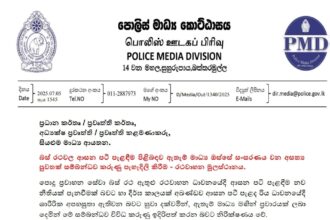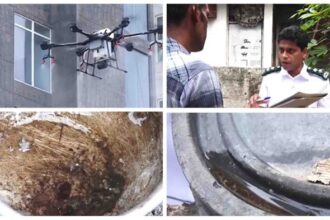By Zhong Sheng
Recently, the Dalai group has been speculating on the issue of the 14th Dalai Lama’s reincarnation, and spreading such false claims as “reincarnation will be decided by the Dalai Lama himself” and it will happen “in a free world” in an attempt to mislead the international community.
As a unique succession system of Chinese Tibetan Buddhism, the practice of Living Buddha reincarnation has a history of over 700 years. For the reincarnation of eminent Living Buddhas, religious rituals and historical conventions, such as conducting a search within China, drawing lots from the Golden Urn, and approval by the central government, have become essential principles that must be upheld.
Reincarnation not a decision for the Dalai Lama himself to make
The reincarnation system of Living Buddhas originated as a solution for succession within Tibetan Buddhist sects, beginning with the Karma Kagyu lineage of the Kagyu sect.
In 1252, Möngke Khan, the Great Khan of the Mongol Empire, recognized the Karma Kagyu master Karma Pakshi as his guru, conferring upon him a gold-trimmed Black Crown and a golden seal. At that time, the Karma Kagyu sect commanded substantial wealth and influence, including lands, livestock, pastures, and dependent communities. In order to preserve the sect’s economic interests and political privileges, Karma Pakshi—invoking Buddhist concepts of the indestructible consciousness, the cycle of rebirth, and the vow-driven manifestation of rebirth—instructed his disciples on his deathbed to identify a child successor. This set a precedent for the reincarnation of Living Buddhas.
After the reincarnation system of the Dalai Lama took shape, the central government of the Ming Dynasty in 1587 conferred the title of “Dorjichang” upon the 3rd Dalai Lama, Sonam Gyatso, granted him a seal, and allowed him to pay tribute. This was the first time that conferment was granted by the central government to the Dalai Lama lineage.
In 1653, the 5th Dalai Lama, Ngawang Lobsang Gyatso, journeyed to Beijing for an audience with Emperor Shunzhi of the Qing Dynasty. The central government conferred upon him the title of “Dalai Lama, Buddha of Great Compassion in the West, Leader of the Buddhist Faith Under Heaven, Holder of Vajra” and bestowed upon him a golden edict and seal, indicating that the title of Dalai Lama and its legal status in the Tibetan religious community were officially confirmed by the central government. It has since become a historical convention that every Dalai Lama must have his title officially approved and conferred by the central government before assuming his religious authority.
In 1793, in order to address the flaws in the reincarnation process of eminent Living Buddhas, the Qing government promulgated a decree known as the 29-Article Imperial Ordinance for Better Governance of Tibet. The Ordinance put in place a Golden Urn lottery system for the reincarnation of Living Buddhas, requiring that the soul boy of the Dalai Lama be determined by lot-drawing from a Golden Urn under the supervision of the central government representative and subject to approval and conferment by the central government.
Since the Golden Urn lottery system was established, the 10th, 11th and 12th Dalai Lamas were determined and confirmed through the lottery procedure; the 9th, 13th and 14th Dalai Lamas were exempted from this procedure with the approval of the central government. This demonstrates that the ultimate authority to mandate or waive the lot-drawing process rests with the central government.
The reincarnation of the Dalai Lama, therefore, has never been determined by any individual alone. While certain religious figures acknowledge the will of the late Living Buddha as a reference in identifying the soul boy, it is by no means the sole clue for identification.
Reincarnation must proceed in compliance with religious, historical conventions and national laws and regulations
A rigorous set of rituals has been established over centuries of practice in the reincarnation of Living Buddhas, particularly the search for and identification of soul boys. These include divination, observation of reflections in the sacred lake, discreet visits, identification of the late Living Buddha’s belongings, lot-drawing from a Golden Urn, enthronement, and conferment by the central government.
Furthermore, the conferment of the title and seal by the central authorities has been an essential prerequisite for eminent Living Buddhas to obtain their legitimacy. The title and status of the Dalai Lama were conferred and confirmed by the central government of the Qing Dynasty. The 14th Dalai Lama was enthroned in 1940 without going through the lottery procedure only after receiving approval from the central government of the then Republic of China.
The Chinese government follows a policy of freedom of religious belief and has promulgated the Regulatory Measures on the Reincarnation of Living Buddhas of Tibetan Buddhism. This document respects the unique characteristics of Tibetan Buddhism as well as the principles of the rule of law. It stipulates the requirements for the reincarnation of Living Buddhas, the procedures for reincarnation approval, and the respective responsibilities of religious organizations and government authorities. It marks a further step toward establishing law-based administration of Living Buddha reincarnation.
Since promulgation of the Regulatory Measures in 2007, nearly 100 Living Buddhas have been confirmed through due process in strict compliance with established Buddhist rituals, historical conventions, and laws and regulations of the country. They enjoy support from religious adherents and communities.
No government interference in the reincarnation of the Dalai Lama
The search for and identification of the reincarnated soul boy are carried out by monasteries and Buddhist organizations in accordance with religious traditions. The government only regulates religious affairs that involve national and public interests. The government’s primary role is performing administrative review and approval, rather than directly identifying a reincarnated soul boy. The government does not interfere in the internal affairs of each religion.
The reincarnation of the Dalai Lama is China’s internal affair. No country, force, or individual has the right to interfere. The administration of religious affairs by a sovereign country itself—whether historically or at the present day—is a common practice, be it in China or any other country. This has nothing to do with the misnomer of “state atheism interfering with theistic belief” peddled by separatists and anti-China forces. It must be emphasized that the administration of religious affairs represents a fundamental exercise of state sovereignty and fulfillment of government duty.
The Dalai group’s unpopular manipulation of the reincarnation issue
On the issue of reincarnation, the Dalai group is bending over backwards to create misleading ideas such as “ending the reincarnation system,” “reincarnation while the Dalai Lama is still alive,” “reincarnation as a woman”,and “reincarnation as an animal.” It shows that what the Dalai group intends to do is not to promote the healthy development of Buddhism but to achieve its ulterior political agenda. It is especially absurd for the 14th Dalai Lama to claim that he would be reincarnated outside China.
Historically, eminent Living Buddhas of Tibetan Buddhism, including successive Dalai Lamas and Panchen Lamas, have been born inside China, a tradition universally acknowledged by the religious community and followers. Consequently, conducting the search within China has become an inviolable principle in Living Buddha reincarnation.
Tibetan Buddhism is a branch of Buddhism adapted to the Chinese realities, where the majority of its adherents reside. The reincarnation tradition itself originated in China, and all administering monasteries are Chinese institutions. Therefore, the regulation of reincarnation is integral to China’s religious affairs administration. The approach of territorial jurisdiction and the principle of searching within China in line with law should be upheld.
While religion transcends borders, religious adherents live in specific countries. The traditional seat of each Dalai Lama is China’s Drepung Monastery, and throughout history, the search for and identification of the Dalai Lama and other eminent Living Buddhas have occurred within China’s territory—with no exception.
While claiming to respect Xizang’s history, culture, and religious traditions, the 14th Dalai Lama has gone to great lengths to undermine the reincarnation tradition of Tibetan Buddhism. His disrespectful approach is a great offense to the followers apart from violating Chinese laws. His manipulation of the reincarnation process amounts to a political farce, and will be firmly rejected by the Tibetan Buddhist community and its adherents and be consigned to the dustbin of history. (Foreign Media)
The views expressed here are the author’s own and do not necessarily reflect the organization’s
The post “Reincarnation of the Dalai Lama Is Not Any Individual’s Call” appeared first on Newswire.



